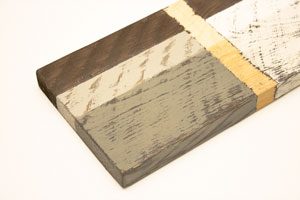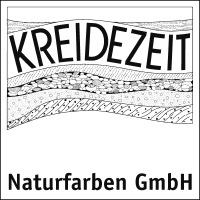This instruction refers to our Shabby Chic Set.
In the past, interior wood surfaces were often also painted with tempera paints. Tempera paints are emulsions of aqueous binders and oil components. Casein is an aqueous binder and a very good emulsifier. So a tempera colour can be produced from casein paint simply by adding drying oils. Tempera paint is better suited for wood coatings than pure casein paint, as the oil content improves adhesion and above all makes the paint somewhat more flexible, similar to a plasticizer. A certain flexibility is important for wood coatings, as wood swells and shrinks.
Kreidezeit Tempera Paint, mixed with safflower oil, is suitable for matt Shabby Chic coats. It should be noted that these surfaces have a lower load-bearing capacity than, for example, surfaces coated with lacquers. Through a treatment with Kreidezeit Safflower Multi Purpose Wax, the paint is sufficiently protected for objects subject to little stress.
All paint structures refer to untreated wood. A common technique is to prime the wood first in dark colour and then paint it with an opaque coat in pastel shades or white. The covering coat is then sanded through or scraped off in places. The fast drying, good sanding properties and low hardness of the tempera paint are an advantage here.
Primer
For priming our set contains the Casein Binder. This is a colorless binder that is mixed with water and colored with pigments.
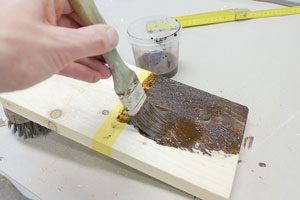
The 50 g of casein binder contained is sufficient for an area of approx. 15 m². For smaller areas, partial quantities can be mixed.
Mixing the total quantity (for approx. 15 m²): measure 1 litre of clean cold water. Remove a small amount of approx. 50 ml and fill into a small bucket. Stir in 100 g of pigment until there are no more clots. Add the rest of the water, stir and stir the 50 g casein binder into the liquid using a whisk or kitchen blender. Leave to swell for 30 minutes and then stir up.
For smaller areas: for 2 – 2.5 m²: measure 200 ml of clean cold water, then remove a small amount of 1 – 2 tablespoons and stir 1 heaped tablespoon (approx. 20 g) of pigment into a cup or glass until there are no more lumps. Add the rest of the water, stir and 1 heaped tablespoon of casein binder (approx. 10 g) into the liquid. Leave to swell for 30 minutes and then stir up.
Apply the primer within 1 – 2 days and stir occasionally during application. Drying time 3 – 6 hours
Variants: You can also omit this primer if
1. you like the colour of the wood as it is and if it has sufficient contrast to the tempera paint.
2. you want to apply two opaque coats of tempera paint with sufficient contrast on top of each other and partially scrape off the upper layer. See color examples.
Top Coat
1 kg of Tempera paint is sufficient for an area of approx. 8 – 10 m².
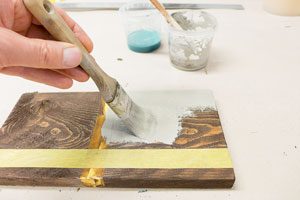
Mixing the total amount (for approx. 8 – 10 m²): Mix 1 kg of tempera paint into 650 ml of clean cold water with a kitchen mixer. Leave to swell for 30 minutes and then stir in, stirring in the 50 ml safflower oil.
For smaller areas: partial amount for 2 – 2.5 m²: stir 15 heaped tablespoons (250 g tempera paint) into 160 ml clean cold water with a kitchen mixer. Leave to swell for 30 minutes and then stir in, stirring in 2 tablespoons (12.5 ml) of safflower oil.
Process within 1 – 2 days. Drying time 8 hours. Due to the drying oils, the final strength of a tempera is only achieved after approx. 4 weeks.
This colour can be tinted with up to 10 % pigment (100 g pigments per 1 kg tempera paint). First mix the pigments with a little water without lumps and then stir into the tempera. See also instructions: mixing pigments.
Shaving/sanding partially the top coat
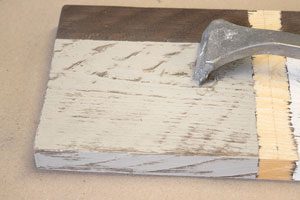
In practice, paint scrapers have proven to be the most effective. You can also improvise and use a spatula, trowel or stucco tools. There are more crown contrast transitions through scraping than with grinding. Use sandpaper P 100 – 150 for sanding.
Surface Protection
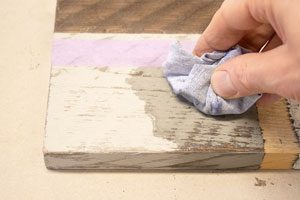
Our safflower multi purpose wax is a solvent-free, particularly low yellowing thistle oil / beeswax mixture. The wax makes the colours more intense/darker. It is applied thinly with a cloth to the dried surface. Allow to soak in for 15 minutes after application and then do not absorb with a dry lint-free cloth. Drying time 24 hours at 20 °C. Due to the content of drying oils there is a risk of self-ignition of the rags! Soaked application cloths and cleaning rags must be spread out to dry outdoors or stored in a closed, fireproof container (glass or tin can).
Finished
